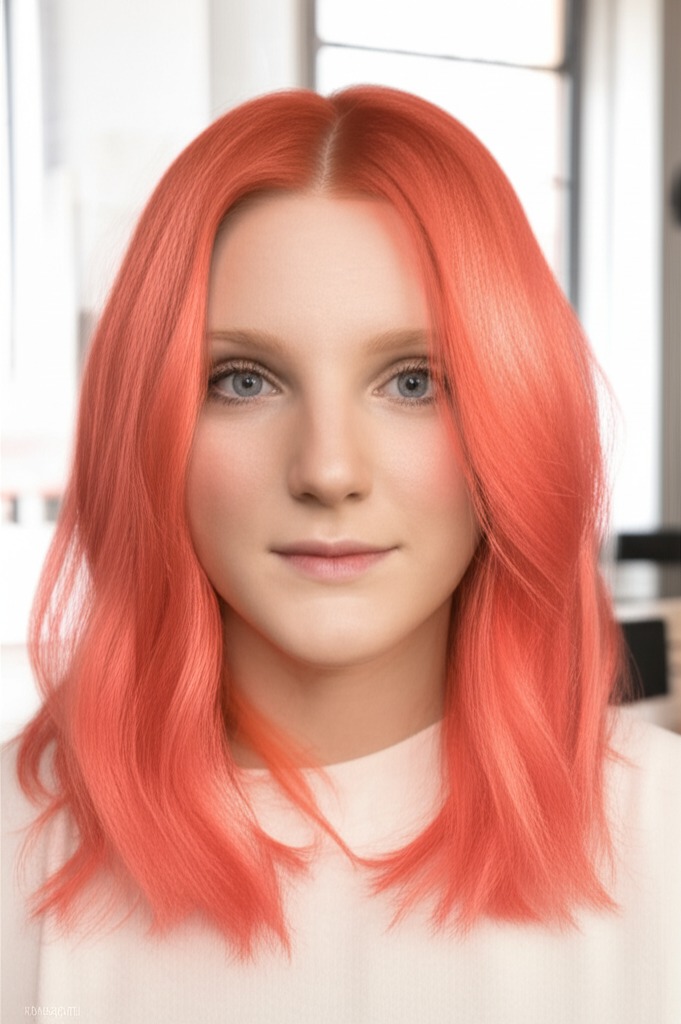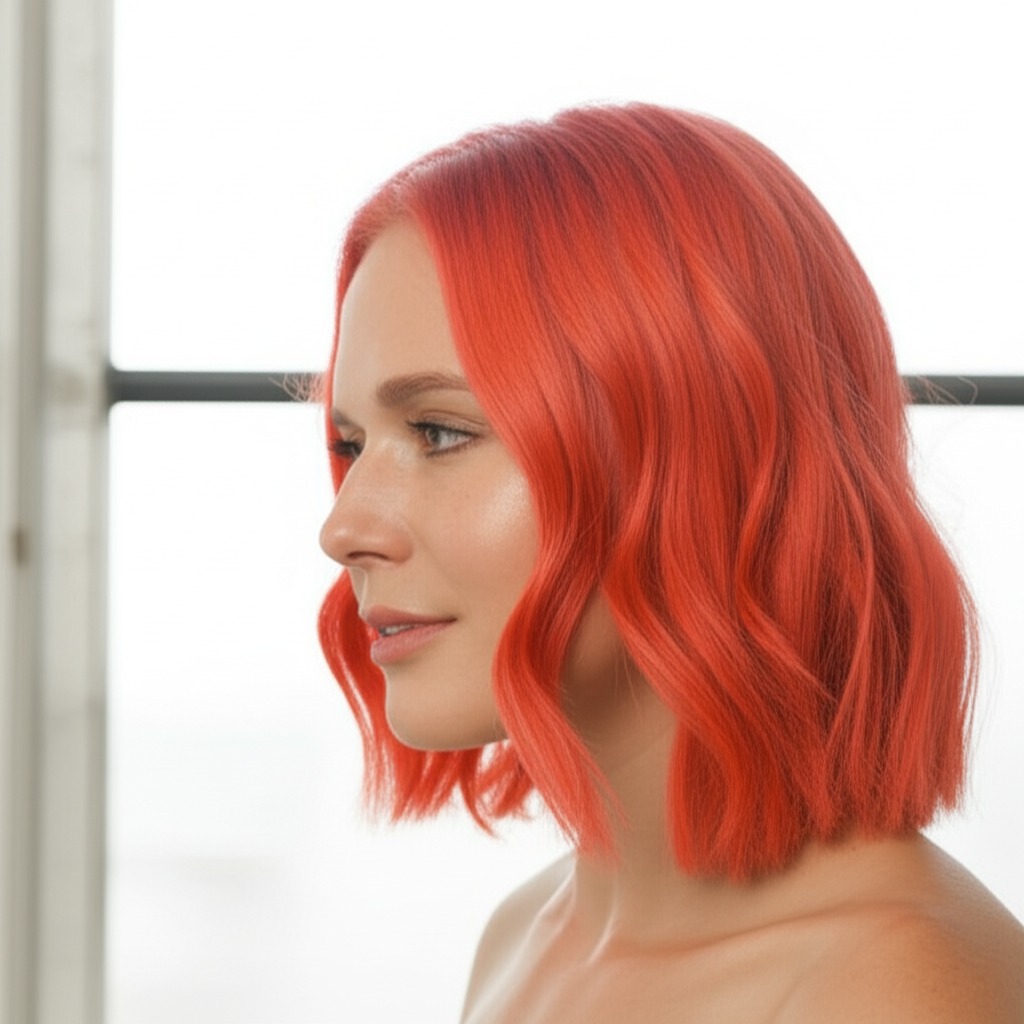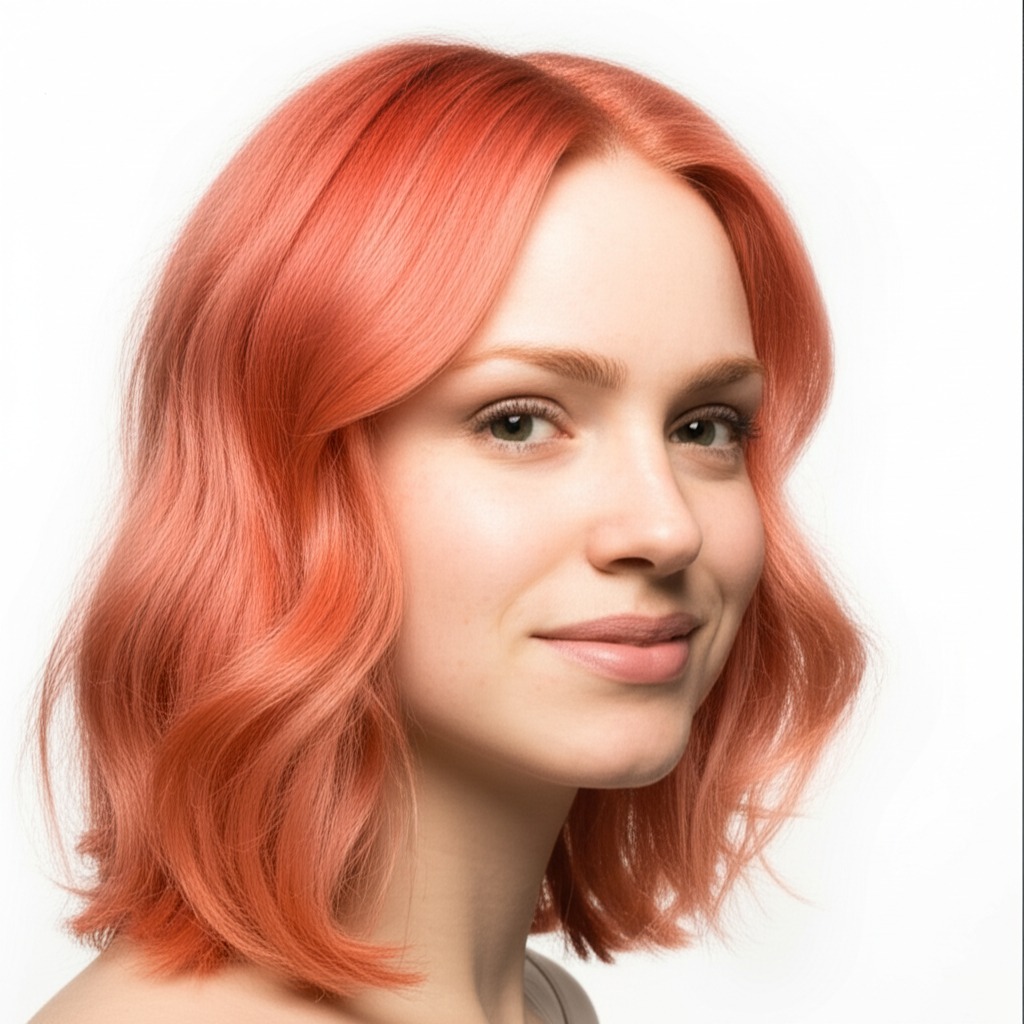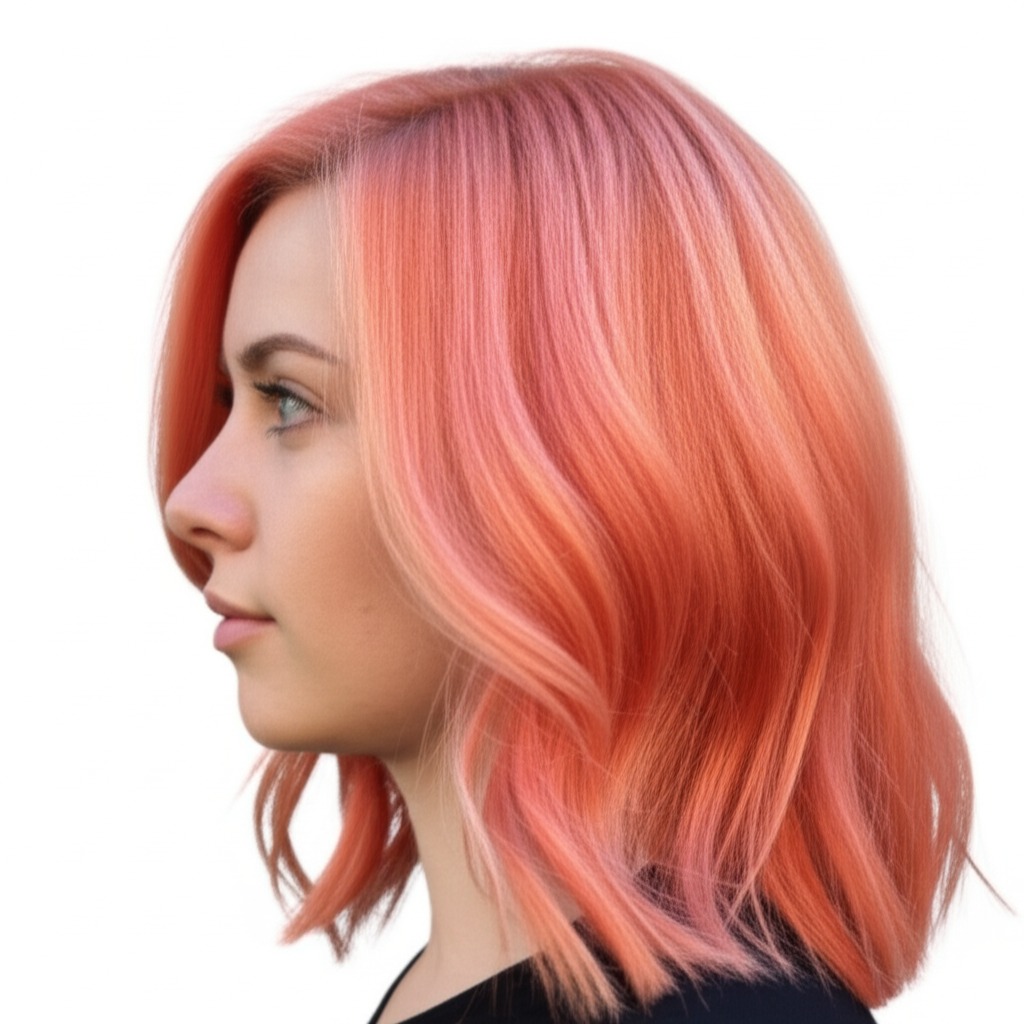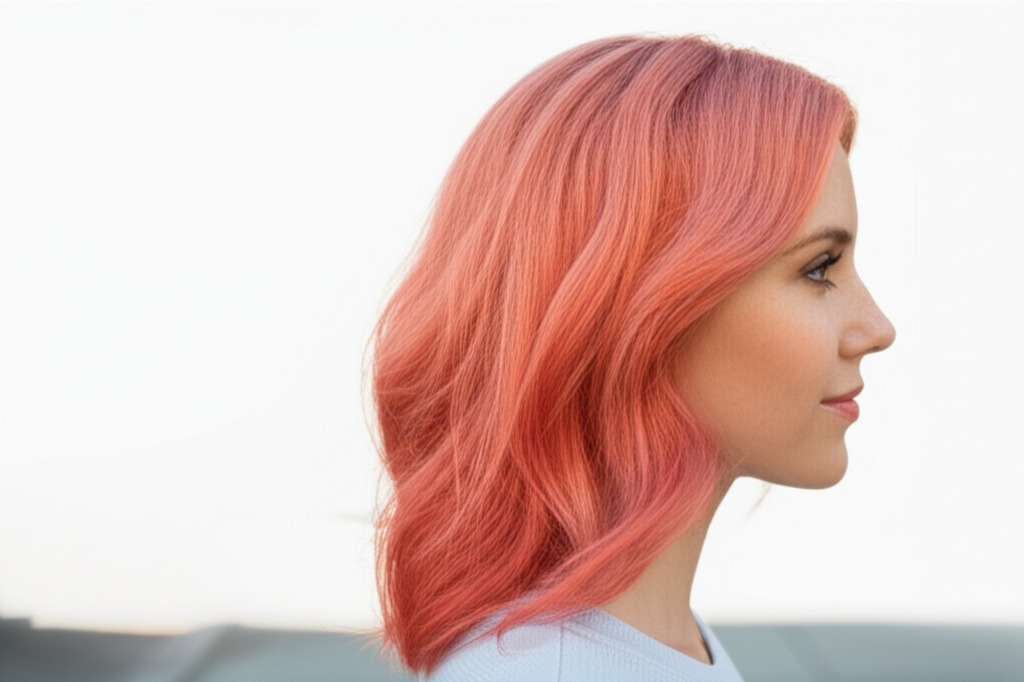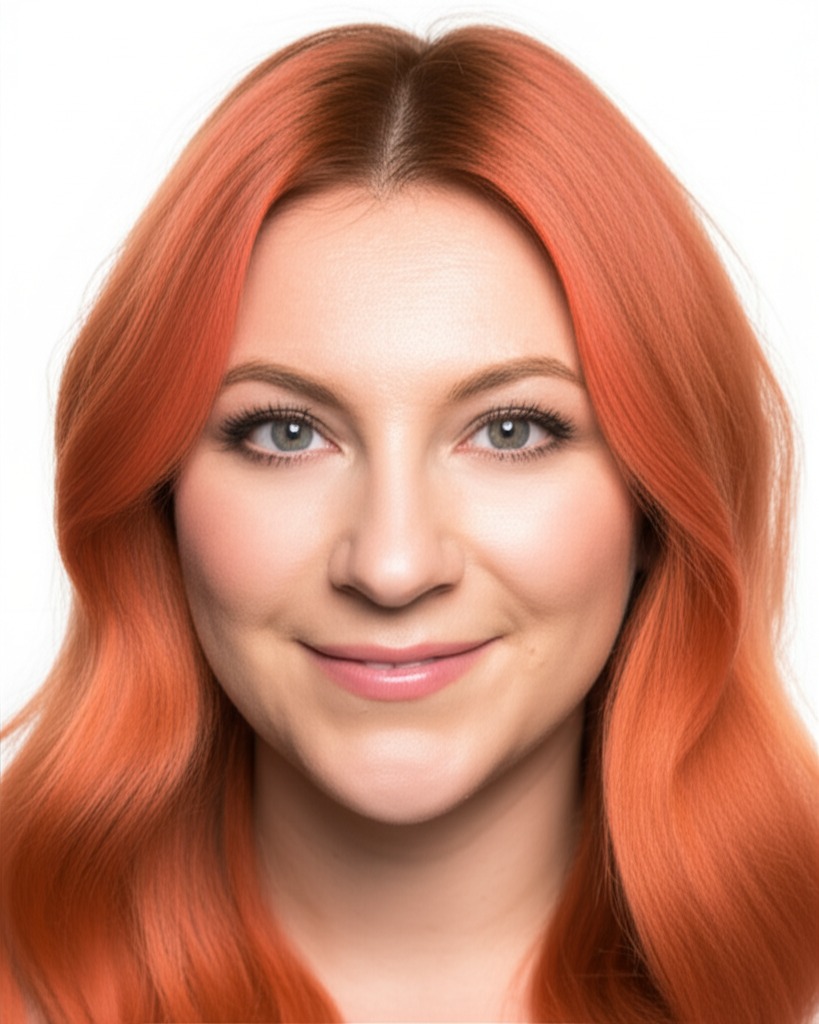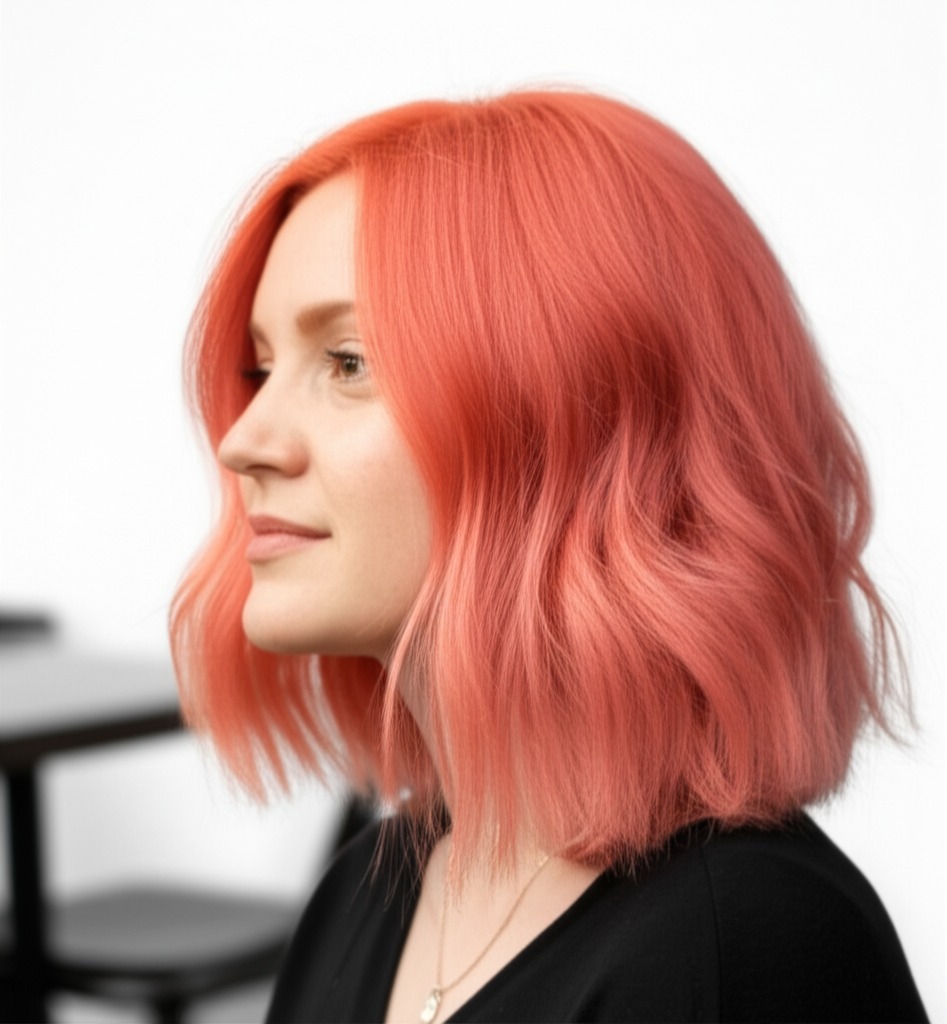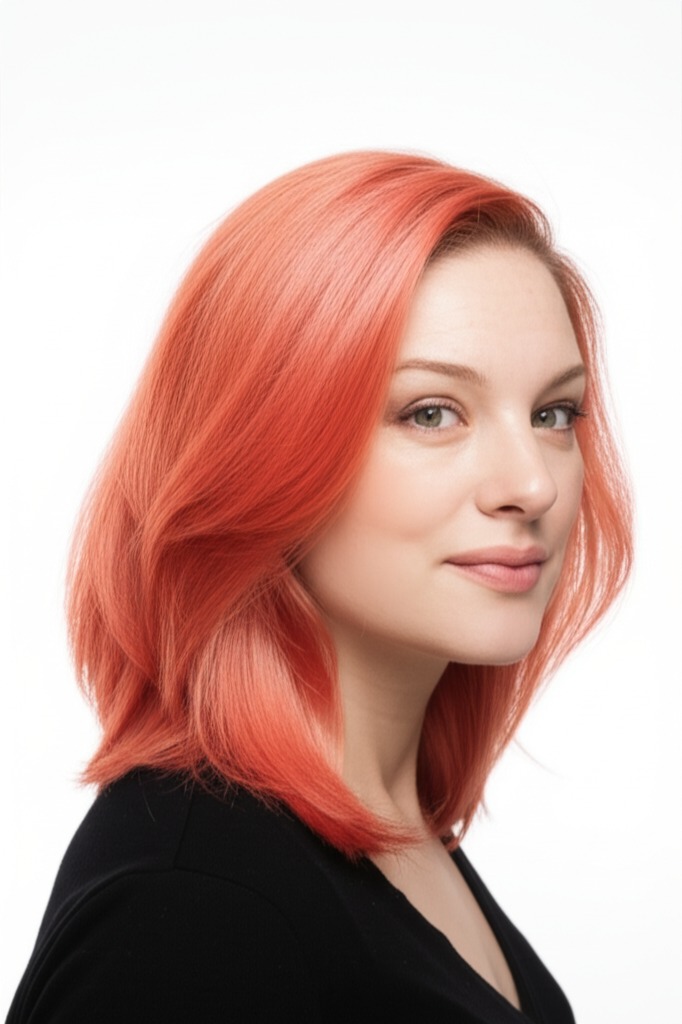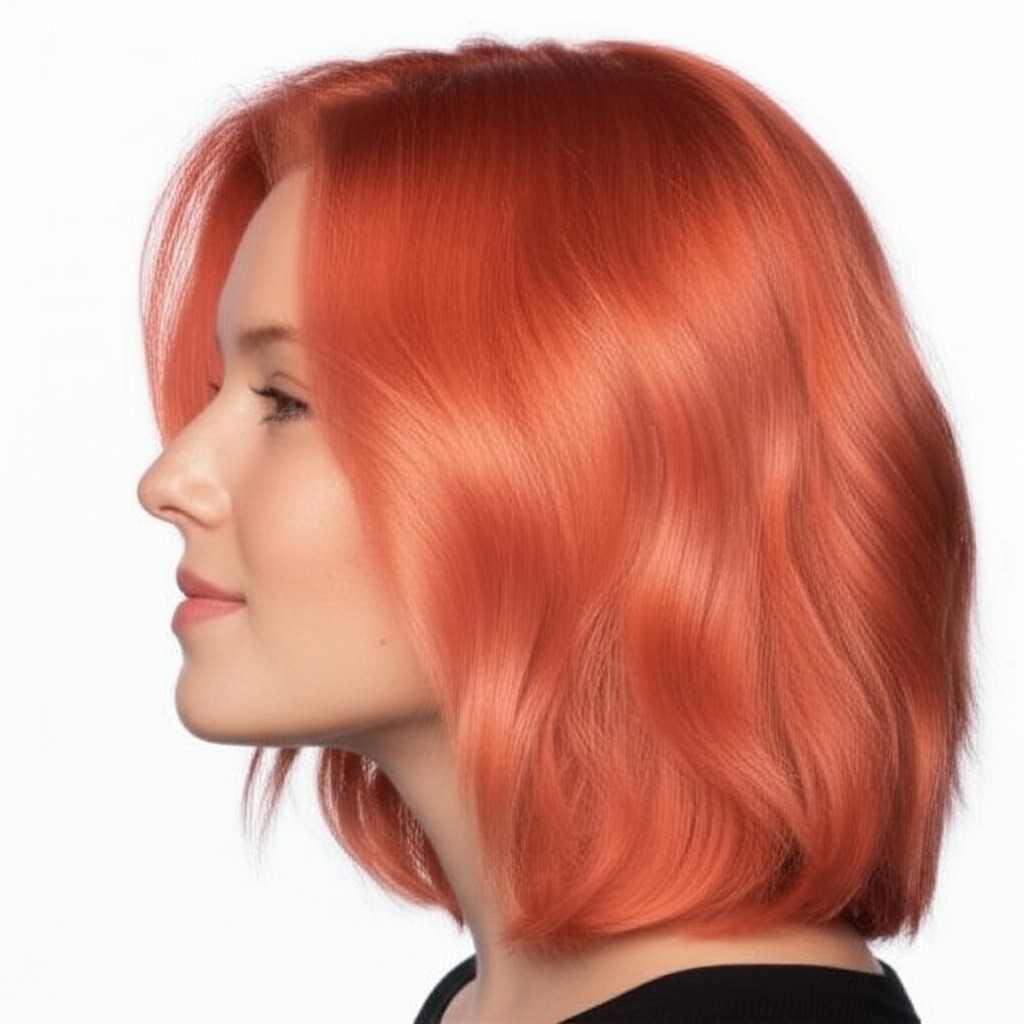#Dive into Coral Hair Color: A Vibrant Guide
Coral hair color is having a moment! It’s playful, energetic, and adds a serious dose of sunshine to your look. But before you rush off to the salon (or consider DIY), let's break down everything you need to know about rocking this vibrant hue. This guide will cover everything from undertones to at-home care so you can achieve your coral dreams!
#1. Understanding Coral: Shades & Depth
Coral isn’t just one color; it’s a family of shades inspired by the beautiful marine life. It generally combines pink, orange, and sometimes even hints of peach or red. Here's what to consider:
- Undertones: Most corals lean warm due to their orange base. However, you can find variations with cooler pink undertones.
- Warm Coral: Think bright oranges mixed with vibrant pink – very summery!
- Neutral Coral: A balance of warmth and coolness - often the most universally flattering.
- Cool Coral (Peach-Coral): More muted, with a touch more pink or peach to soften the orange. This is less common but can be stunning on certain skin tones.
- Depth/Levels: Hair color levels range from 1 (black) to 10 (lightest blonde). Coral typically looks best on lighter bases:
- Level 7-9: These are ideal starting points for a vibrant, true coral. Your stylist might need to lift your hair slightly if it's darker.
- Level 10+: A very light base allows the color to really pop! However, be aware that extremely light bases may require more frequent toning.
#2. Who Does Coral Flatter?
Coral’s warmth can bring a gorgeous glow to your complexion, but it's not for everyone. Here's a guide:
- Skin Tone & Undertone:
- Warm Skin Tones (yellow or golden undertones): You'll likely shine with warm corals! The orange tones will complement your skin’s natural warmth.
- Neutral Skin Tones: You can often pull off most coral shades, but experiment to see what you like best.
- Cool Skin Tones (pink or blue undertones): A cooler, peach-coral might work better than a super bright orange coral. It's crucial to find the right balance!
- Eye Color: Coral enhances almost any eye color!
- Blue Eyes: The warmth of coral creates a beautiful contrast.
- Green Eyes: Coral brings out the green in your eyes, making them appear even brighter.
- Brown Eyes: Coral adds vibrancy and sparkle to brown eyes.
- Natural Hair Level Starting Point: As mentioned earlier, levels 7-9 are generally best. Darker hair will require more lifting (and potential damage), so be realistic about what’s achievable.
#3. Technique Options: From Subtle to Statement
How you apply coral makes a big difference in the final look!
- Single Process: A solid, all-over color – bold and vibrant but can feel quite dramatic. Best for those with lighter bases (levels 7-10).
- Highlights/Lowlights: Adding coral highlights on darker hair creates dimension and movement. Lowlights of a complementary shade (like rose gold) can soften the look.
- Babylights: Very fine, subtle highlights that mimic natural sun-kissed streaks. A great option for a softer, more blended effect.
- Gloss/Toner: A gloss or toner is essential to refine the coral shade and add shine. It helps adjust undertones (e.g., neutralizing brassiness).
- Balayage-Effect vs Solid: Balayage creates a hand-painted, natural look with softer roots and blended color transitions. A solid application offers a more uniform, impactful result.
#4. Maintenance & Longevity: Planning Ahead
Coral is a statement color – it needs commitment!
- Wash Frequency: Aim for 2-3 washes per week to preserve vibrancy.
- Toner Refresh: Coral fades quickly, especially if not properly toned. Expect to refresh your toner every 4-8 weeks depending on the shade and how much fading you can tolerate.
- Root Growth Pacing: Consider strategically placed highlights or balayage to blend root growth seamlessly. A solid color will show roots more dramatically.
- Budget/Time Planning: Coral color is typically a medium to high investment in terms of both time and money, especially if significant lifting is required.
#5. Seasonality & Pairing with Cuts: Finding Your Style
Coral isn’t just for summer! It can be adapted for any season.
- Seasonal Tweaks:
- Summer: Bright, warm corals are perfect for a sunny vibe.
- Fall/Winter: Muted, peach-corals or rose-coral blends offer warmth and sophistication without being overwhelming.
- Pairing with Cuts:
- Bob & Lob: Coral looks fantastic on sleek bobs and lobs – the color pops against the sharp lines.
- Long Layers: Coral highlights beautifully through long layers, creating movement and dimension.
- Pixie Cut: A bold coral can be incredibly chic with a pixie cut! Consider strategic placement to maximize impact.
#6. At-Home Care: Protecting Your Investment
Proper care is vital for keeping your coral vibrant.
- Sulfate-Free Shampoo & Conditioner: Sulfates strip color, so switch to gentle, sulfate-free formulas.
- Clarifying Cadence: While sulfates are a no-no, occasional clarifying washes (every 4-6 weeks) remove buildup and keep the color bright.
- Heat Protection: Heat styling damages hair and fades color. Always use a heat protectant spray before using hot tools.
- Color-Safe Styling Products: Look for products specifically designed for colored hair.
- Product Checklist: Sulfate-free shampoo, conditioner, leave-in conditioner, heat protectant, color-safe serum/oil.
#7. Common Pitfalls & Solutions
Let's address potential issues and how to avoid them:
- Brassiness: Orange tones can oxidize and become brassy over time. Use a purple or blue toning shampoo/mask regularly.
- Banding: Uneven color application, especially with solid colors, can create noticeable bands. A skilled stylist is key!
- Patchiness: This happens when the color doesn't lift evenly across the hair. Proper pre-lightening and even product distribution are essential.
#8. Pros & Cons: Weighing Your Options
Pros:
- Vibrant & Unique: Coral stands out from the crowd!
- Warmth & Glow: It can brighten your complexion.
- Versatile (with adjustments): Can be adapted for different seasons and styles.
Cons:
- High Maintenance: Requires frequent toning and color touch-ups.
- Fade Risk: Coral fades relatively quickly compared to darker colors.
- Can Be Damaging: Achieving coral often requires lifting, which can weaken hair (especially on darker bases).
#9. Salon Consultation Script: Setting Expectations
Before you commit, discuss these points with your stylist:
- "I'm interested in a coral color – I like [show pictures of inspiration] but want something that complements my skin tone."
- "What level do you think is achievable given my current hair color?"
- "How much lifting will be required? What are the potential risks to my hair’s health?"
- “Can we discuss a plan for root growth and how to blend it?”
- "What at-home care products do you recommend?"
- "Let's talk about realistic toning frequency and cost."
#10. FAQs: Your Coral Questions Answered
- Can I go coral directly from dark brown hair? It’s possible, but requires significant lifting (bleaching), which can be damaging. A gradual approach with highlights over several sessions is often a healthier option.
- Will coral look good on my skin if I have very fair skin? It can, but a softer peach-coral or rose-coral blend will likely be more flattering than a super bright orange shade.
- How long does coral hair color last? Solid coral typically fades within 4-6 weeks, while highlights/balayage can last longer (8+ weeks) depending on the technique and aftercare.
- Can I DIY coral hair color? While possible for those with experience in lightening and toning, it’s risky without professional knowledge. Uneven results or damage are common pitfalls.
- What if my coral turns too orange? Use a purple-toned shampoo or mask to neutralize the excess orange.
- How do I prevent my hair from becoming dry after coloring with coral? Focus on deep conditioning treatments, use leave-in conditioners, and minimize heat styling.
With careful planning, expert application, and diligent at-home care, you can rock a stunning coral look that turns heads!
